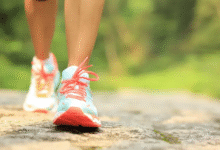Exercising Safely in Hot Weather: 6 Essential Tips + Hidden Health Benefits

Exercising Safely in Hot Weather: 6 Essential Tips + Hidden Health Benefits
When the weather warms up, many of us are excited to take our workouts outside. Fresh air, natural sunlight, and a change of scenery can all enhance the experience. However, exercising in hot weather comes with certain risks—especially dehydration and heat exhaustion—if not done carefully.
With a few smart adjustments, you can safely enjoy outdoor workouts while keeping your body cool and well-hydrated. Here’s how:
🧊 1. Stay Hydrated (More Than You Think)
It sounds obvious, but hydration is critical when working out in hot conditions. Sweating leads to water and electrolyte loss, which can result in dehydration and even heat stroke.
💡 Pro tip: Don’t just drink water. Replenish lost electrolytes with foods rich in potassium and sodium—like cucumbers, oranges, celery, and carrots. After your workout, add sea salt to meals or enjoy natural electrolyte sources like pickles or sauerkraut.
🕒 2. Choose the Right Time of Day
Avoid working out when the sun is at its peak (typically between 11 a.m. and 4 p.m.). The best times to exercise outdoors in summer are early morning or just before sunset, when temperatures are lower and UV exposure is reduced.
🚿 3. Pre-Cool Your Body
Research shows that lowering your body temperature before exercise can improve performance in hot environments. Try a cold shower, a quick swim, or simply splashing your face and arms with cold water before heading out.
👕 4. Dress Light and Right
Wear lightweight, breathable clothing in light colors that reflect sunlight instead of absorbing it. Avoid dark colors and heavy fabrics. Choose moisture-wicking materials that help sweat evaporate, keeping you cooler for longer.
Loose-fitting shirts and shorts offer greater airflow and comfort, especially during cardio or high-intensity workouts.
🔍 5. Listen to Your Body
Don’t push past your limits. If you start feeling dizzy, nauseated, weak, or overheated—stop immediately and hydrate.
Heat exhaustion is dangerous and can escalate quickly. Monitor your water intake and energy levels during each session. Take breaks when needed.
⏱️ 6. Keep It Short (At First)
If you’re not used to hot-weather workouts, start slow. Begin with short sessions (20–30 minutes) and gradually increase duration as your body adapts.
Hot yoga, heated indoor cycling, or simply jogging outdoors during warmer months can help build tolerance safely.
🌟 Hidden Benefits of Exercising in the Heat
You might be surprised to learn that training in the heat offers some unique advantages—when done safely.
💪 1. Improved Endurance and Heat Tolerance
Exercising in hot conditions challenges your body to push through discomfort. Over time, this builds physical and mental resilience.
Studies show that heat-adapted athletes have lower core temperatures and perform better in endurance sports.
🏃 2. Better Performance in Competitive Events
Training in heat strengthens your body’s ability to handle stress. This helps you perform better in marathons, triathlons, or competitions that take place in varying weather conditions.
It boosts cardiovascular efficiency, increases sweat response, and enhances thermoregulation.
💧 3. Natural Detox Through Sweating
The body can lose up to 1 liter of fluid per hour during intense workouts in heat. Sweating helps flush toxins from your system—but it’s crucial to replenish lost fluids and minerals to avoid complications.
⚠️ Warning Signs to Watch Out For
Always know your body’s limits. If you experience any of the following symptoms, stop exercising immediately and cool down:
- Muscle cramps
- Nausea or vomiting
- Fatigue or weakness
- Headache or dizziness
- Blurred vision
- Excessive sweating or confusion
- Low blood pressure
These may be signs of heat exhaustion or, in severe cases, heat stroke—a medical emergency that requires immediate attention.
✅ Final Tips
- Stay hydrated throughout the day, not just during exercise
- Use a wearable fitness tracker to monitor heart rate and hydration
- Avoid caffeine and alcohol before outdoor workouts
- Gradually increase exposure to heat
With mindful preparation, exercising in the heat can be both safe and rewarding.






